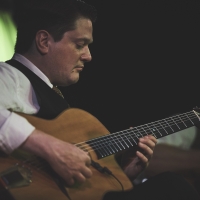DjangoBooks.com
Welcome to our Community!
Categories
- 20K All Categories
- 1.1K General
- 478 Welcome
- 59 Archtop Eddy's Corner
- 146 CD, DVD, and Concert Reviews
- 385 FAQ
- 26 Gypsy Jazz Italia
- 27 Photos
- 204 Gypsy Picking
- 21 Unaccompanied Django
- 15 Pearl Django Play-Along Vol.1
- 17 Gypsy Fire
- 45 Gypsy Rhythm
- 1.4K Gypsy Jazz University - Get Educated
- 131 Gypsy Jazz 101
- 228 Repertoire
- 221 History
- 708 Technique
- 51 Licks and Patterns
- 6 Daniel Givone Manouche Guitare Method Users Group
- 20 Eddie Lang Club
- 1.3K Gypsy Jazz Gear
- 804 Guitars, Strings, Picks, Amps, Pickups and Other Accessories
- 461 Classifieds
- 49 Recording
- 62 Other Instruments
- 18 Violin
- 5 Mandolin
- 22 Accordion
- 7 Bass
- 10 Woodwinds
- 348 Gypsy Jazz Events
- 143 North America
- 110 Europe
- 95 International
In this Discussion
Danse Norvegienne Harmonic Study
 lemanouchecbien
New
lemanouchecbien
New

I love this song !
It is a very cool song to practice your I-II-V












Comments
So how do I approach soloing over this?
It seems obvious I can use the D major arp for the first part. But for the rest of the song the chords move pretty fast and I'm not sure what to play. I find myself playing the D major scale...
Thanks for any tips and/or examples
btw the harmonic analysis is wrong and some of the chords are wrong too, sorry! i gtg now, maybe someone else will correct everything
www.denischang.com
www.dc-musicschool.com
thanks
EG, D = 1, Gm = IV etc.
As for what to play, my take is to play as close to the melody as possible and then try to embellish it a bit on each run through of the chord sequence and then chuck in the inevitable diminished arpeggios.
Alan
http://www.youtube.com/watch?v=dn-v1keBv10
I'd add that I'm with Denis on this one. It's essential to study the arpeggios for every single chord.
While doing a harmonic analysis is useful in some ways, for example when you're teaching the tune to someone on a gig etc., as far as improvisation goes I don't really find that stuff relevant. Beyond the obvious ii-V-I and minor iib5-V progressions in it, I treat every chord as an entity in itself. So for example in the last four bars where the harmony goes D, D7, G, Gm6, I certainly wouldn't be thinking how that relates to the home key of D as I was playing, but rather the arpeggios and to a lesser extent the scales of each chord as it comes along.
http://www.youtube.com/thrip
Alan
For now I'm mainly focussing on ii-V-I with Jimmy Bruno and Dennis Chang DVD 2, but never too early to work on the rest
I've got a correct progression in a book where the Eb0 from above is split into F#m7/5- and B7/5+ and some other changes. I can figure out what to play over most, and already my first try is much more fun then what I've played before.
This is one of my favorite songs, as are ballads in general. They give me some time to feel and think what to play next.
I'll start doing the arpeggio's and then maybe check back on how Thrips solo uses them. Wondeful solo indeed!
Thanks again,
Frédéric
http://www.youtube.com/thrip
but before you can get to that level,, it's absolutely important to master each individual chord and its arpeggios at the most basic level (triads and 4 note chords), so you need to work them all out individually
these are the real chords
D Gm D Gm D Bm7 Em7 A7 F#m7b5 B7 Em7 A7 F#m7b5 B7 Em7 A7 D D7 G Gm D Bm7 Em7 A7 D
Those are the chords as they are played nowadays, but when Django recorded it, In the B section, he used Adim7 Bbdim7 Adim7 Bbdim7...
www.denischang.com
www.dc-musicschool.com